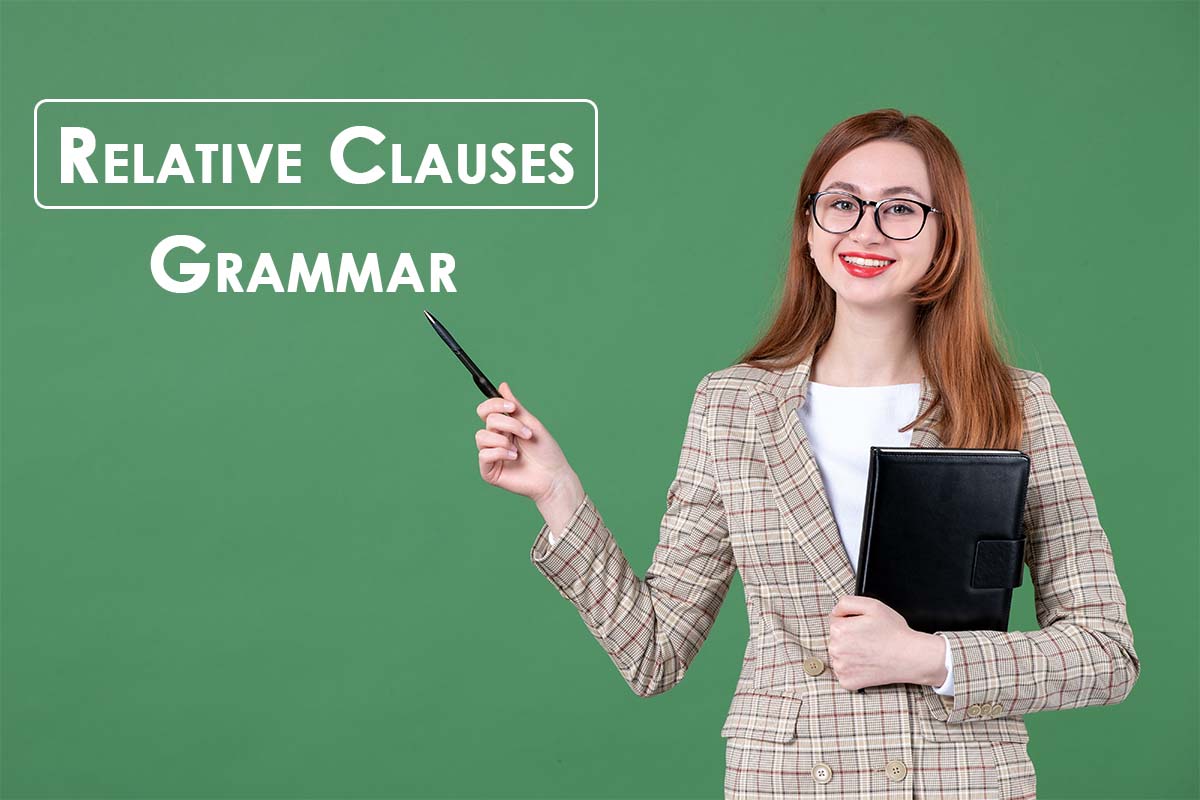This article will help you understand what relative clauses are how they are used and which relative pronouns to use in relative clauses. If you don’t know still about a clause, sentence, or phrase, get the knowledge of them from the given links below.
- Clause, Phrase and Sentence Differences
- Differences Between Defining and Non-Defining Relative Clauses
What is a Clause?
Clause: A group of words or a part of sentences containing a subject and predicate.
- I was asleep when they came to my house.
Consists of two clauses:
- I was asleep and when they came to my house.
Kinds of Clauses
There are two kinds of clauses:
1: Independent Clause / Main Clause 2: Dependent Clause / Subordinate Clause.
1. Independent or Main Clause
An independent clause can stand alone as a complete grammatical sentence. It contains the main subject and verb of the sentence.
- He will be angry.
Read More: Independent and Dependent Clauses
2. Dependent or Subordinate Clause
A dependent clause cannot stand alone as a grammatical sentence because of an extra element that changes an independent clause to a dependent clause. It must be always connected to an independent clause.
- Because we are late.
Extra element+ Independent clause = Dependent clause
- He will be angry (Main clause) because we are late. (Subordinate clause)
A dependent or subordinate clause can function as an adjective, a noun, or an adverb in a sentence. In this article, we will take a look at the adjective clause or relative clause.
Relative or Adjective Clause
A dependent clause that functions as an adjective in a sentence is called an adjective clause or relative clause. Or a relative clause is a subordinate clause that’s connected to the main clause of the sentence by a word such as who, whom, which, that, or whose, etc. It is also known as an adjective clause.
- A. Mary is the girl that got first position.
- B. He is the man who is a doctor.
In the above sentences, the italic words make relative clauses. In sentence A. the relative clause describes the noun, girl. In sentence B. the relative clause describes the noun, man.

Kinds of Relative Clauses
There are three kinds of relative clauses:
- Defining Relative Clause
- Non-Defining Relative Clause
- Connective Relative Clause
1. Defining Relative Clause
Defining relative clauses give essential information about the person or thing that we are talking about in the sentence.
Defining relative clauses usually comes after the noun it modifies and the following relative pronouns or relative adverbs are used in defining relative clauses. The following relative pronouns or adverbs come at the start of the relative clause and refer to a noun or that person in the sentence.
List of Relative Pronouns and Relative Adverbs:
Relative Pronouns: who, whom, which, that, and whose.
Relative Adverbs: when, why, and where.
- Students who have not taken admission are waiting outside.
(In this sentence we understand that there are many students in the academy, but we are talking about the ones who have not taken admission, and the class is a defining relative clause.) - Do you know the man who is standing over there?
- He gave me a parcel which you had sent.
Relative Pronoun: Relative pronouns are used to link a relative pronoun to another part of a sentence and introduce the relative clause. The words: who, that, which, whom, whose, etc. can be used as relative pronouns.
Subjective Relative Clause: If the relative pronoun is followed by a verb, the relative pronoun is a subjective relative pronoun. OR When a relative pronoun qualifies the “Subject” then it is called a subjective relative clause.
- America is a country. She defended human rights.
- America is a country that defended human rights.
Here the relative pronoun is used instead of the subject (She). Hence it is a subjective relative pronoun.
Objective Relative Clause: If the relative pronoun is not followed by a verb (but by a noun or pronoun), the relative pronoun is an objective relative pronoun.
- He is a college professor. I respect him.
- He is a college professor whom I respect.
Here the relative pronoun is used instead of the object (him). Hence it is an objective relative pronoun.
Note: Objective relative pronoun can be dropped in defining relative clauses, which are then called Zero Relative Clauses. But when it is the subject of the clause it cannot be omitted. Consider the examples below.
- Dr. Qadeer is the scientist
whowe saw on TV. - Dr. Qadeer is the scientist we saw on TV.
- The teacher
whom you were talking about is her brother. - The teacher you were talking about is her brother.
- The teacher
whotaught the lesson was very intelligent. - The teacher taught the lesson was very intelligent.
Punctuation
Commas are not used to separate defining relative clauses from the rest of the sentence. Commas or parentheses are used to separate non-defining relative clauses from the rest of the sentence.
2. Non-Defining Relative Clause
The non-Defining relative clause gives essential information about the person or thing that we are talking about in the sentence. The information is not necessary and we don’t need it to understand who or what is being referred to.
Relative Pronoun
The relative pronouns which are used to introduce the non-defining relative clauses are: who, whom, whose, which and the relative adverb where.
- My brother, who lives in the USA, will come coming Friday.
(In this sentence the information in the non-relative clause is something more about my brother which is not essential information. If the clause is removed from the sentence, the sentence would be still grammatically correct). - My friend, who won the last match, is now in the final.
- The desk in the corner, which is covered with books, is broken.
Difference Between Restrictive and Nonrestrictive Adjective Clauses
3. Connective Relative Clauses
Connective relative clauses look similar to non-defining relative clauses and they are sometimes linked to the main clause by relative pronouns (whom, who, whose, and which) conjunction (and, or) and advertisers such as (although, but, etc…)
(one of…., two of… many of…., several of…) don’t define nouns, but rather continue the story.
- I introduced him to my classmates, one of whom offered us a ride to school.
- He explained everything to his manager who offered to help him.
- She introduced several titles in the class, one of which involved cyber security.
- We accepted her excuses although that wasn’t the first misunderstanding.
Exercises 1:
Complete each sentence using who/whom/whose/which.
- What is the name of the man…………? car you borrowed?
- A pacifist is a person……………. believes that all wars are wrong.
- An orphan is a child ……………… parents are dead.
- What was the name of the person………? Whom you spoke on the phone?
- This school is only for children ……………first language is not English.
- They asked me questions…………. I couldn’t answer.
Exercise 2:
Practice this:
- Sara is my friend. Her mother writes detective stories.
- It is the notebook. I wrote on it.
- She is my student. Her ambition is to climb Everest.
- I met a couple. They’ve just got married.
- She is the owner of a restaurant. I met her yesterday.

